For decades now the world has been screaming for inspiring and effective leadership, for leaders who can transcend the gridlock and dysfunction so glaringly apparent. Despite tens of billions of dollars spent each year on leadership trainings, the quality of leadership in our organizations remains largely uninspiring, weak and lacking in vision. In a 2011 study, fewer than four percent of executives rated their leadership development programs as “very effective.”
So why are more than 96 percent of these programs so ineffective? I contend it is because the trainee may learn new information or techniques but their consciousness remains unchanged. Mere information does not make the person more courageous, more aware and committed, or more inspiring – all elements of an effective leader. A monkey who has learned a new trick is still a monkey. However, once an individual has experienced a transcendent shift in being, a new level of consciousness, they see and hold everything differently. They are a different person once they have this highly-personal existential shift in self-awareness.
Global events of the past few years make it painfully evident we humans are at a major crossroads. We all know the list of challenges and crises awaiting future generations so there’s no need for me to cover them here. They transcend local matters and are now threatening the global commons. No one is immune to the consequences.
Continuing to think and behave as we have in the past is contrary to the best interest of all of humanity. Einstein warned us decades ago that we cannot solve our problems with the same consciousness with which we created them - yet, maintainers of the status quo are continuing to ignore his advice.
We now find ourselves in an “era of consequences” where rich and poor, North and South, East and West, will all be affected. Reversing this course is beyond the ability of one person or even one country. Working collaboratively is the only option, yet this appears to be both impractical and unattainable. This apparent paradox tends to make us a resigned, impotent global population.
Why is a change in consciousness so important now? Why should we work at creating organizational cultures that are more conscious? Two thoughts expressed by 20th Century visionaries may make the case:
The late Vaclav Havel, first President of the Czech Republic and Nobel Laureate, writes:
Without a global revolution in the sphere of human consciousness, nothing will change for the better in the sphere of our being as humans, and the catastrophe toward which this world is headed – be it ecological, social, demographic or a general breakdown – will be unavoidable.
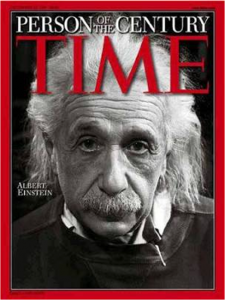
Time Magazine’s Man of the Century, Albert Einstein, writes:
A human being is part of the whole, called by us ‘Universe,’ a part limited in time and space. He experiences himself, his thoughts and feelings as something separated from the rest – a kind of optical delusion of his consciousness. This delusion is a kind of prison for us, restricting us to our personal desire and to affection for a few persons nearest to us. Our task must be to free ourselves from this prison by widening our circle of compassion to embrace all living creatures and the whole of nature in its beauty.
In order to “free ourselves from this prison” as Einstein recommends, we need to revive at least two essential human qualities which we have allowed to atrophy – courage and imagination. As we recognize that we are culpable in building this “prison” and we that have fallen asleep or become entranced by an outmoded, unsustainable lifestyle, we can find the courage to take a stand for a more spiritually fulfilling, environmentally sustainable and socially just world. We can also rediscover our imaginations and dare to envision futures that are more life-affirming, peaceful and meaningful – a world where mature, responsible and adult behavior is the norm and not the exception. This liberation from the prisons we have built ourselves can result from a new consciousness. While the word itself defies precise definition, here are some possible meanings for consciousness:
Consciousness: the having of perceptions, thoughts and feelings; awareness. The term is impossible to define except in terms that are unintelligible without a grasp of what consciousness means... Nothing worth reading has been written about it.
The International Dictionary of Psychology
Consciousness is like the Trinity; if it is explained so that you understand it, it hasn't been explained correctly. - Behavioural Brain Sciences
Visionary futurist Peter Russell who speaks and writes about the “primacy of consciousness” puts it this way: “The biggest hurdle to defining consciousness is the word itself. A noun is inappropriate. Consciousness does not exist as a ‘thing’. It is not a ‘thing’ to be known, but knowing itself.” Here is a video of Russell talking about consciousness.
Our state of mind, our worldview, the consciousness which we bring to our everyday lives, has a huge impact on the reality we experience. I contend that our consciousness is the biggest influence of how we experience our lives and how the world appears to us.
If I engage with people and the world with suspicion, fear and feeling separate from others, is it any surprise that my experience would validate that worldview?
We have created a world that reflects a consciousness of separation, fear, and cynicism. The degree to which we have violence, injustice and environmental crises in our reality reflects this collective consciousness. To change our world, to transform it, we must change our consciousness. I contend that an integrated consciousness - based on connection not separation, love not fear, pragmatic idealism not cynicism, mature adulthood not adolescence – will serve us well in creating a world that works for everyone, including future generations. We can reverse the trends!
A powerful vision for a better future can be a big motivator for change but the global crises we face that are posing a threat to our continuing existence on this planet are even more powerful motivators. It all depends on the choices we make and whether we make them consciously with courage and imagination or unconsciously through petty distractions.
Global Choicepoint
As a species we are on the brink of a historic choicepoint, one never before faced by human beings. Evolutionary shifts have taken place somewhat randomly in the past caused largely by “acts of nature,” random mutations and natural selection.
For the first time in human history we have the opportunity to evolve on purpose – to consciously evolve - or we can choose to continue living as if there is no tomorrow and risk significant negative impacts, if not extinction, to our species. Never before have human beings had the choice to consciously evolve and simultaneously possess the ability to act.
A second choice also confronts us. Do we consciously choose and act together or do we remain in isolated silos, separate from one another and remaining largely ineffective in such an important and critical task? Will we collaborate and work together, reflecting our interconnectivity and common interest? Will we set aside our differences which seem so petty in contrast to the huge challenges that lie before us?
As a species, we are on a precipice. On the other side of the great chasm before us lies enormous possibility for humanity, the things many of us dream about – sufficiency and justice for all, a sustainable relationship with the environment, peace and freedom. Yet given the unknown dangers and apparently treacherous barriers that lie between the cliffs of today and the shores of tomorrow, the situation can appear hopeless and impossible.
Einstein stated, "Only those who attempt the absurd will achieve the impossible." This is the challenge we face if we are to be conscious leaders – to look at seemingly hopeless situations with new eyes, see possibility where others see none, and bridge this chasm of impossibility so consciousness, wisdom and real leadership can come together to transcend the present human condition to which most people have become resigned.
Conscious Leadership
A new and different kind of leadership is needed. The new leaders are not necessarily elected, promoted or appointed. They don’t require credentials to see what needs to happen and take a stand for required actions or remedies. They don’t remain silent, condoning and thereby maintain the status quo. The new leaders aren’t irresponsible anarchists or rabble rousers but a breed of more mature, long-term thinkers who have developed a level of consciousness closer to what Einstein was advocating.
"Conscious leadership" is the term I coined back in the 1980s to communicate the quality being called for in leading people, organizations and society through this historic species-wide transformation and determining a positive future for our children and grandchildren to inherit. I call it “conscious” because our circumstances call for a higher state of consciousness, a state of mind that includes a heightened awareness of what is needed for the whole of humanity and taking responsible action as a result of that awareness. As emphasized by His Holiness the Dalai Lama: "As people see their predicament clearly - that our fates are inextricably tied together, that life is a mutually interdependent web of relations - then universal responsibility becomes the only sane choice for thinking people."
When paradigms change, the agents or catalysts for change rarely come from within the core of the system. Established leaders are usually so embroiled in the traditions, beliefs and priorities of the existing system that they rarely see the need for change much less initiate it. As former U.S. Ambassador to NATO Harlan Cleveland writes in his book Nobody in Charge, "Those with visible responsibility for leadership are nearly always too visible to take responsibility for change."
Much like the child in the “Emperor’s New Clothes” tale who calls attention to the emperor’s nakedness, these new leaders dare to blow the whistle on dysfunctional behavior. They recognize it more readily because of their higher state of consciousness. Sometimes they see the insanity in the existing status quo. This new consciousness will be coming from people who are not mired in the system. They aren’t wedded or loyal to the status quo and have wider and more visionary perspectives.
In contrast to traditional leaders who spend years building résumés, acquiring wealth and power, playing politics to get the rank and titles, these new leaders know the way to a better future is incredibly simple. They do not rely on trappings of authority to act; they see what needs to be done and they go ahead and do it. If they cannot do it on their own, they feel no restraint in aligning with others. They focus on the deed, not the protocol.
To bring about the much-needed global transformation we are talking about here, no widespread education or re-training programs or initiatives are needed; no large budgets are required; no expert consultants need be hired and it doesn’t require years to implement. An internal shift in consciousness allows new thinking to begin immediately. It can happen in minutes, as it does often in times of emergency or crisis. Conscious leaders give up their patterns of “going along to get along.” They are no longer willing to condone the status quo – And that becomes their stand.
In my travels around the world I ask my audiences where they think we are in the maturation of our species – child, adolescent, young adult or wise elder. Regardless of where I am – Australia, Canada, Europe, Japan, South America – the overwhelming majority of hands go up for “adolescent.” Most agree that we are not fully mature.
Conscious leaders grow up and begin thinking and behaving like responsible adults. They no longer tolerate adolescent attitudes and behaviors, in either others or themselves. They demand responsible commitment to “being the change they want to see” and doing things differently. They help create functional systems that replace dysfunctional ones. They follow an idea once put forward by visionary inventor F. Buckminster Fuller who said, “You never change things by fighting existing reality. To change something, build a new model that makes the existing model obsolete.”
Personal Mastery and Self-Knowledge
Conscious leaders have examined themselves sufficiently to know their strengths and weaknesses, their predilections and their darker sides, and they have learned how to be more mindful and aware. They have also learned about complex social systems and how they tend to behave – how devious they can be when attempts are made to change them. They have achieved a level of mastery over their egos so they do not think of themselves as better, worse or against anyone or anything. In other words, they have done their homework.
Some of this personal inner work may have been through peer support groups, workshops and classes on self-improvement or perhaps even psychotherapy or counseling. By whatever means, it is introspection with a purpose: to become a better person, a more awake person.
These leaders may have had to overcome some negative conditioning from their past or learn things they never were taught.
Learning about oneself and one’s patterns of behavior shines light on what many people prefer to keep in the shadows. Dysfunctional organizations continue because dysfunctional people allow them to. The healthier and more functional people become the less tolerance they have for being in dysfunctional systems, whether it be in their own families or the organizations in which they work.
So what do these conscious leaders look like?
These leaders offer compelling visions that inspire their followers. They take strong stands for positive change. They possess the kind of self-confidence that comes with knowing oneself, not just bravado or false images of themselves. They also possess the necessary courage to take their stands, do the right thing and not capitulate. They are authentic integrated human beings. Anyone knowing them would say about them: “What you see is what you get.” They walk their talk.
Exemplars – Past and Present

Dame Anita Roddick (1942-2007)

Robert K. Greenleaf (1904-1990)
Some of the early pioneers in this field of conscious leadership are now either elders in the field or have passed on. These include, but are not limited to: international leadership guru Warren Bennis at University of Southern California’s Marshall School of Business; the late visionary and social scientist Willis Harman who influenced hundreds of people (including myself) most of whom are now influencing others; Barbara Marx Hubbard who founded the Foundation for Conscious Evolution; the late Dame Anita Roddick, founder of The Body Shop; and the late James Farr who was also using the phrase “conscious leadership” earlier on.
In the late 1960s, former AT&T executive Robert Greenleaf started the concept of “servant leadership” which was a paradigm-popper at a time when most leaders thought of themselves as generals or kings. Another leadership guru, James Autry, further popularized this term with his 2004 book The Servant Leader.
In more recent years, numerous examples of conscious leaders and organizations have been emerging in the fields of business, education, government, civil society, media and finance. I’ll present a few of these over the next few pages, starting with some exemplars from the field of conscious leadership itself.
In particular, I’d like to mention three organizations – Heartland Circle, The Conscious Leadership Forum and FutureShapers, LLC. Heartland was founded by Craig and Patricia Neal in 1995 who then started convening Thought Leader Gatherings in Minnesota and the San Francisco Bay Area. They have since written a book called The Art of Convening. They bring people together to have “essential conversations” in what I would call a sacred space. They also offer “Art of Convening Tele-trainings” for people interested in furthering this sacred work, leading and convening groups.
The Conscious Leadership Forum is a member-based organization that supports the expansion of conscious leadership in the world. It was founded in 2010 by Diana Chapman, Jim Dethmer and Kaley Klemp. Forum Members agree to take 100% responsibility for their lives - professionally and personally. They experience themselves as the creators of the lives they are living and the organizations they are leading. One of the most noteworthy aspects of the CLF experience is that members agree to “15 Commitments.”
A more recent entrant to the field is the FutureShapers Roundtables, where groups of 10 to 12 executives who aspire to become more conscious leaders are brought together to support one another in their mutual intentions to grow in mindfulness and self transcendence. Local Roundtables are convened and facilitated by Certified Roundtable Hosts who have been trained to serve and support the groups in their process of self-discovery. I am privileged to be a co-founder of FutureShapers along with my partner Tom Eddington.
Exemplars from Business
In the investment community there are a couple of people I would consider conscious leaders. One is Craig Wichner, Managing Partner of Farmland, LP, a U.S. private equity fund that acquires conventional farmland and converts it to organic, sustainable farmland for the purpose of long-term cash flow and capital appreciation. Founded in 2009, investors benefit from the security of owning farmland while participating in the growth and profitability of the organic market.
Another exemplar of conscious leadership is Stu Rudick, Founding Partner of Mindful Investors, LLC, a private equity fund focused on investments in healthy and sustainable consumer products companies. Rudick has been a leading investor in the sustainability, wellness and social impact community for over 30 years. Making money by making a difference, he founded Mindful Partners in 1993, a top performing public and private market hedge fund.

Laura Roberts
In the manufacturing sector, two conscious leaders come to mind, both involved in making chemical products normally considered toxic. One is Laura Roberts, CEO and co-founder of Pantheon Chemical, based in Arizona. Patheon’s customers include the Department of Defense, Boeing, Dassault Falcon Jet, Honeywell, Seagate, Stryker, DeBeers as well as most of the domestic commercial airlines. Dubbed "The Toxic Avenger" by Forbes Magazine, Roberts formed Pantheon with a fierce commitment to shattering the myth that green technologies are less effective and more expensive than traditional ones. Pantheon continues to develop and commercialize products that help customers increase financial growth while at the same time sustaining human health and safety, promoting social responsibility and protecting the environment. A former school teacher, Laura would like to set a high bar for the chemical industry to follow when it comes to replacing toxic chemicals with environmentally friendly ones or “green chemicals.”
Another “toxic avenger” is Eric Ryan, one of the two “brainparents” of Method, a producer of green cleaning products that are human-friendly. Method is one of the fastest-growing private companies in America and has turned the consumer-packaged-goods industry on its head. Ryan has helped develop a playful culture at Method but is quite serious about producing cleaning products people don’t have to hide under their sinks. To quote from the company’s website “we’re here to make products that work, for you and for the planet, ones that are as easy on the eyes as they are on the nose.”
In contrast to most of these exemplars who started their own ventures, Debra Paterson has worked in the financial services industry for over thirty years, the last 25 with Wells Fargo Bank, as one of 270,000 employees. She has made her state of consciousness a major priority and feels that her commitment to self-awareness has allowed her to function quite highly despite the challenges of modern executive life. She is an Executive Vice President and serves as Community Banking Head of Human Resources – a very senior and highly visible position within the bank. Through self- reflection, she has been able to discover her strengths which has allowed her to lead others in doing the same, contributing to a culture of “leading yourself” that has been developed within the bank.
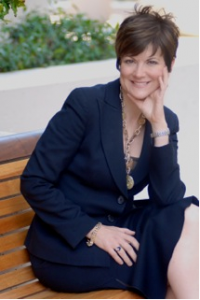
Debra Patterson
A turning point in her self-awareness came when she moved from a senior line management role early in her career to a staff learning and development position. One of her greatest recent challenges was remaining committed to her spiritual practice in spite of the global financial crisis of 2008 and, subsequently, the largest financial institution merger ever when Wells took over Wachovia Bank - with its ailing loan portfolio – doubling the size of the organization. “The next four years were very challenging,” says Paterson, “I do not know how others cope in times of stress like these without a spiritual practice of some kind.” Her most liberating shift happened when she lost her fear, thanks to her ever growing faith and spiritual, practice. “Once the fear was gone, I had nothing to protect and could bring 10 percent of myself to the job and the challenges,” she said. Paterson has been able to help “shapeshift” the corporate environment so people can bring their whole selves to work – body, mind and spirit – and still get great business results.
In book publishing, Steve Piersanti founded Berrett -Koehler Publishers in 1992 with a stated purpose of “creating a world that works for all.” Initial print runs focused on progressive business books but later other genres beckoned to the company giving rise to imprints focused on helping people create positive change individually and society-wide. The San Francisco-based independent publisher is consistently bucking industry trends and remains profitable despite the Great Recession of 2008. Many attribute Berrett-Koehler’s success to the consciousness with which the company is managed, and its commitment to quality. Hesitant to take much credit for the company’s success, Piersanti demonstrates a trait common to all conscious leaders – humility.
Exemplars in Education
In the field of education, I am most familiar with conscious leaders at the University or Executive Education levels. Three people I would like to mention here are Bill George at Harvard Business School, Linda Alepin at Santa Clara University and Mel Toomey at the Center for Leadership Studies, based in Connecticut. Let me begin with Mel who is founder of the Center and a teacher of its Master of Arts in Organizational Leadership (MAOL) degree program. He teaches that context gives meaning to the work being done, something that is missing for many executives in today’s chaotic and frantic work climate.
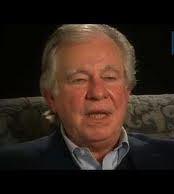
Mel Toomey
Toomey writes, “A well-designed, generated context helps those who work in our organizations understand why they are doing something and to see the difference they make. When we examine context in the foreground of organization with the same attention we might give operations, manufacturing or distribution, we begin to see the implications of treating it as the soft stuff. The idea that context …is the ‘soft stuff’ has got to rank among the top ten most uninformed views about organization. If [contexts] are so soft, why do organizations have such a devil of a time making changes around them?”
Linda Alepin is the Dean’s Executive Professor of Entrepreneurship at Santa Clara University. She also founded and runs the Global Women Leadership Network (GWLN) - a non-profit leadership development and community resource for women leaders around the world. A part of the Santa Clara University’s Leavey School of Business, GWLN provides a residential leadership program, coaching services and membership in a global cooperative. The result is a global network of over 160 exceptional women who are visionary leaders ready to transform their communities.
I first met Bill George when he was running Medtronic in the early 1990s. I interviewed him for The New Leaders and he subsequently offered to write the foreword to an anthology I compiled on the role of spirituality in business – The New Bottom Line. He has since retired from running companies and is now teaching authentic leadership at Harvard Business School. As George reports in his 2011 book True North Groups, his research indicated that one of the key factors in sustaining leadership is having a support team. He and his colleagues concluded that in addition to a spouse, partner or mentor, a support team was the most important thing a person could have for staying grounded and increasing their self-awareness.
To encourage greater intimacy and more opportunities for personal sharing, George and his team divide his authentic leadership classes at Harvard into groups of six, with 50 percent of a student’s overall course grade allocated to their performance within the group. Unique within the Business School curriculum, these small groups are consistently rated by the students as the highlight of the course and one of their most important experiences at Harvard. Authentic Leadership is the most requested course by more than 80 percent of second year students and its capacity has been expanded to accommodate 600 students per year. The Authentic Leadership Development Executive Course is also very popular and is now offered three times per year, with an annual intake of 240 senior executives. More than 2,500 executives have taken the course to date, according to George.
Exemplars in Mass Media and Civil Society
In the area of mass media, I’d like to mention two individuals: Emmy winner Tim Peek at NBC News in New York and the highly public Oprah Winfrey. I first met Tim in 2012 while he was in the San Francisco Bay Area for a three-day meeting of the Conscious Leadership Forum of which he is a member. Tim serves as “Executive Producer for Transformation” at NBC. For the past several years he has been devoted to new media and organizational change at NBC News. He founded NextMedia Productions for NBC and is developing what he calls “a 21st Century business culture” that values leadership over management, empowerment over direction, and trust over fear.
Oprah Winfrey has gained incredible success as a media mogul and transformed herself from a childhood that could otherwise set the scenario for a horrible life. She has reinvented herself numerous times and does much of it quite publicly. She has openly championed and supported the work of many advocates of transformation and conscious leaders from many sectors of U.S. society, all this while establishing herself as one of the wealthiest self-made women in the world. Forbes magazine lists her as one of the top dozen women who “run the world.”

Lynne Twist
In civil society (or the non-government organizations (NGOs) community) I will mention four conscious leaders with whom I have had direct dealing over many years – Lynne and Bill Twist who co-founded The Pachamama Alliance, and John and Susan Marks at Search for Common Ground.
The Pachamama Alliance was founded in 1995 to partner with an indigenous tribe in the Amazon Rainforest whose land was being threatened by big oil. Bill and Lynne Twist co-founded the Alliance with John Perkins who continues to serve on it board. Its scope was expanded in 2005 to include educating people in the developed world about their role in the devastation of less developed countries. They began offering seminars/symposia to inform, educate and inspire people to become engaged in doing anything that will reverse the global trends that threatening all living systems. A global network of over 3,700 volunteer facilitators host these seminars in many countries, inspiring attendees into both hands-on action and supportive actions of all kinds.
John Marks started Search for Common Ground in 1982 to help transform the way the world deals with conflict - away from adversarial approaches and towards collaborative problem solving. Managed by John and his wife Susan, Search now has about 600 employees, working in 50 offices across 30 countries. Search uses a variety of innovative methods for peacemaking and resolving conflict. In Africa, for example, where a vast proportion of the population have radios, they broadcast educational soap operas. In another example they tap into the popularity of football through their award winning film “The Team”. John and Susan also teach a social entrepreneurship class each year at the Esalen Institute.
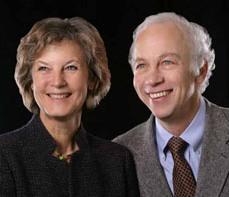
John and Susan Collin Marks
Exemplars in Government and Politics
I found identifying conscious leaders in government much more challenging than the previous sectors. This could be due to my lack of contacts in politics and national governance. It could also be due to a dearth of conscious leadership in this sector worldwide. Three people I will mention here are no longer in office, Butan’s King Jigme Singye Wangchuck, South Africa’s Nelson Mandela, and the USA’s Al Gore. The fourth person I will mention is in his sixth term as a U.S. Congressman – Ohio’s Tim Ryan. I recognize the criticism my selection of American leaders may generate as our country is incredibly divided by partisanship nowadays. However I didn’t select them because of their party; I selected them because they fit my criteria of leading with an awareness of what works best for all, not just some. Both happen to be Democrats.
When Bhutan was unified in the early 17th century, the legal code declared “if the Government cannot create happiness for its people, there is no purpose for the Government to exist.” In 1972, the 4th Dragon King – sixteen year old Jigme Singye Wangchuck – amongst many major reforms declared “Gross National Happiness” to be more important than GNP and from that time onward the country oriented its national policy and development plans towards Gross National Happiness (or GNH). The Constitution of Bhutan directs the State “to promote those conditions that will enable the pursuit of Gross National Happiness, founded on the belief that the beneficial development of human society takes place when material and spiritual development occurs side by side to complement and reinforce each other.” In 2006 “the 4th King” abdicated the throne in favor of his eldest son.
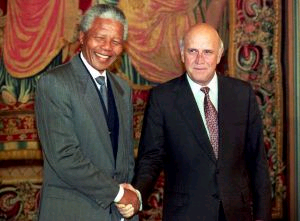
Nelson Mandela and F. W. de Klerk
Nelson Mandela still serves as a role model for aspiring leaders worldwide. The consciousness he displayed and the thoughtful actions he took as apartheid was ending in 1994 is remarkable even today. He brilliantly modeled forgiveness, service, humility and awareness. When asked about leaders they admire, more people cite Mandela than any other public figure. Former U.S. Ambassador to the United Nations Richard Holbrooke was asked about the people he admired most in the world. He replied, "The greatest person I ever met, bar none, is Nelson Mandela, and I have gotten to know him very well. No man is perfect, not even Mandela, but he took history by the throat, seized it, and changed its course through a combination of moral authority, vision, strategic sense, practical genius, and a remarkable capacity for forgiveness toward the thugs who ran South Africa under Apartheid."
Al Gore’s legacy is more likely to lie in his work as an environmentalist than in politics, where he is still demonized in the U.S.A. by the right. I cite him as a conscious leader for his earlier work in writing Earth in the Balance in 1992, then producing the movie “An Inconvenient Truth” 14 years later, sandwiching his eight year stint as Vice President in between. He has been an outspoken advocate for social transformation and he came more into his “sense of self” once he abandoned politics and spoke his truth.
Ohio Congressman Tim Ryan is very unusual for a contemporary American politician. He is a self-confessed meditator, a practitioner of mindfulness and has published a book called A Mindful Nation, which offers a hopeful vision for how mindfulness can reinvigorate America’s core values and transform and revitalize its communities. Ryan publicly engaged with spiritual teacher and bestselling author Marianne Williamson and others at the 2013 Wisdom 2.0 conference in San Francisco, attended by 1,800 people (see video here).
Now in his sixth term as a U.S. Congressman, Ryan has been an outspoken advocate for promoting mindfulness practice as an aid to dealing with the variety of complex problems facing the U.S.A. During his tenure he has helped establish learning programs based on mindfulness, and social and emotional awareness, in several Ohio schools. When asked how he manages to cope with the incredibly dysfunctional system called the U.S. government, he stated that he relies on his daily mindfulness practice.
Exemplars in Law and Law Enforcement
Despite all the derogatory jokes about lawyers, there is a global movement in the various world legal systems to bring greater consciousness into the judicial process. This consciousness is variously expressed through a wide range of people and organizations, large and grassroots, who are bringing conscious leadership into the practice of law. Sometimes referred to as the “integrative law movement” there is no single focus or common objective; all are motivated to humanize the various legal systems, shifting from a paradigm of separation, fear and scarcity to one of interconnectedness, compassion and sufficiency.
J. Kim Wright is a lawyer who now travels the world as an advocate and ambassador for transformative approaches to the law. She is constantly on the move serving as “a butterfly with a cause,” touching down wherever there is active effort to bring about radical change in her profession. She serves as a cross pollinator amongst lawyers active in restorative justice, peacemaking, therapeutic jurisprudence, holistic law, contemplative practices, and many other expressions of this new direction in the practice of law. Mediation over litigation, rehab over prison for drug offenders, and collaborative law are a few other examples of innovative transformations of legal systems throughout the world.
Ginger Charles spent 27 years as a police officer in Colorado. She recognized early in her police career there was an accumulation of stress and disease within the police culture with a resulting increase in morbidity and mortality rates for police officers. She earned a Masters degree in Psychology, focusing on stress-related disorders within the police community and later earned a doctorate in Health Psychology. Her research explored "How Spirituality is Incorporated in Police Work." Since she retired, she founded the Institute for Spirituality and Policing, based in California, which focuses on research, education, and consultancy in the law enforcement community.

Retired police sergeant Ginger Charles
The Conscious Organization
What sort of model could make our existing organizations obsolete as Fuller recommends? Given that most human organizations are dysfunctional systems and rarely serve their originally intended purposes, what alternative might we come up with to better serve humanity?
In the 1990s I began speaking and writing about “The Conscious Organization.” I envision it not as an end state where every worker is “certified” as self-actualized, transcended or enlightened, but where each and every element of the company, division, bureau, agency or institution is spotlessly cleaned of any residual dysfunction. And much like a window, it must be re-cleaned from time to time.
The Conscious Organization is one that is continually examining itself and is committed to becoming as self-aware and responsible as it can at any given time in its life. It purposefully creates a very low tolerance for dysfunction and bureaucracy, conditions that I call the “organizational shadow.” It possesses the collective will to be vigilant about unresolved issues that might fester under the surface of awareness or otherwise go unnoticed as they do in so many organizations today. This collective will is explicitly embedded in the organizational culture from the very start and refreshed regularly.
Most existing organizations, including our corporations, endure some degree of bureaucracy where the focus is more on internal pathologies - such as procedures and processes that reflect some quirky personality - and less on meeting the needs of their customers. Most organizations have developed a tolerance for certain shadows or dark behaviors that limit their potential to be effective and vital enterprises and workplaces. Executives have become resigned to a less-than-fully-functional state, rationalizing it as “the best they can do under the circumstances.” This can only give rise to mediocrity and low morale.
One of the first steps to creating a conscious organization is to gain agreement that the people who make up the organization want to be part of a consciousness culture and are willing to start relating with one another. In like manner, all stakeholders will resolve to hold each other accountable for ending any dysfunction.
Conscious organizations, or anyone involved with them, will be more likely to recognize an unwanted quality, procedure, practice or other element of their culture, because they have built-in vigilance for that which is not conscious. This vigilance is explicitly part of the organizational culture, embedded in the DNA. Once dysfunction is recognized, a rallying cry goes out and the organization’s resources are marshaled toward “cleaning up” that area and making it more conscious. This could be compared to how the human body's immune system responds to an infection or any invading toxic agent.
A Better Future
Our hope for a better world and a better future lies in a new kind of consciousness. The old consciousness, which has resulted in greater disconnection, obsessive consumption, environmental degradation and cultural homogenization, needs to go. Conscious leadership is based on the assumption that we are all connected - like leaves on the same tree, not separate entities competing for the same resources. Once we realize all humans are interconnected, as enshrined in the indigenous African philosophy “unbuntu,” it makes no sense to do harm to our brothers or sisters. When one realizes that their humanity is tied to the other’s humanity, empathy and compassion take the place of “otherness.”
This new consciousness requires looking through a new lens toward the future. Here are a few comparisons between conscious leadership and the darker sides of traditional leadership:
[one_half]
Traditional Leadership
Intimidates, rules, manipulates
Relies on form, structure
Outer-directed
Eventually becomes incompetent
More adolescent, even if highly functional
Strong persona, maintains image
Politics prevails
Tends to lead forcefully
Tends to be dominating
Protects own image
[/one_half] [one_half_last]
Conscious Leadership
Inspires, evokes greatness
Trusts in self, other
Inner-directed
Continues to grow and learn
Adult, wiser and more mature
Authentic and genuine
Truth-telling prevails
Leads with presence
Possesses dominion, mastery
Serves those who follow
[/one_half_last]
Through conscious leadership we can transcend traditional means of resolving conflict in our world. We can transcend perverse nationalism, elitism and fundamentalism in all our institutions, not just religions. Through conscious leadership we can create a way of life that is sustainable and allow our descendants to inherit a world that is life-affirming and flourishing for everyone. With the help of these new leaders, greater numbers will come to recognize the interconnectedness of all life. What a wonderful future we humans have waiting for us if we can get past this impasse of separateness. We will stand a greater chance of fulfilling a destiny that goes beyond our current level of evolution.
This “better future” is not a fantasy for one person or one group but a future which affirms and respects all life. It allows all of humanity to have their basic needs met. It assures our planet will continue to serve as a hospitable home, and vindicates the decree of democracy pioneer Thomas Paine’s decree: "My country is the world. My countrymen are mankind."
Getting Into Action
All these thoughts are mere academic rhetoric unless there is action to back them up. So, dear reader, what about you? Are you going to continue giving legitimacy to those systems and institutions you complain about? Or are you going to begin speaking out to people who can do something to change things?
Are you ready to embark on a practice of self-discovery, to examine your life and raise your own consciousness so you are sensitive to the pulse of humanity and the power and purity of a responsible global citizenry?
What do you see that needs to be changed? What will you do about it? Now is the time to get into action. Now is the time to take responsibility to lead the way if you possess the consciousness, the awareness and the sensitivity to be a conscious leader.
Are you ready to reach out to others and invite collaboration, thereby tapping into the power of collective action? Are you ready to commit yourself and your colleagues to the “universal responsibility” the Dalai Lama speaks of, making the “only sane choice”?
You will be standing on the shoulders of the elders in this movement and you will have companionship of the emerging individuals who are standing tall for a transformed way of living, and leading. You need not be alone!
[divider_line]
About the author
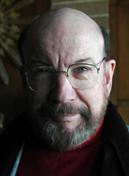 John Renesch is a San Francisco-based businessman-turned-futurist. His background includes over fifty years’ experience as a business owner, CEO and Managing Director in real estate, investment securities and other industries within the private sector. This business experience shaped his pragmatism. Later, he edited a series of forward-thinking business anthologies including the original writings of over 300 visionaries from industry, academia and the professional community, reawakening his idealism. Now a “pragmatic idealist” he has published hundreds of articles and 14 books including his latest: The Great Growing Up: Being Responsible for Humanity’s Future which was selected as the 2013 Grand Prize Winner for Non-Fiction books by the Next Generation Indie Book Awards. For more information about his work visit his website – www.Renesch.com. To contact him by email: John@Renesch.com.
John Renesch is a San Francisco-based businessman-turned-futurist. His background includes over fifty years’ experience as a business owner, CEO and Managing Director in real estate, investment securities and other industries within the private sector. This business experience shaped his pragmatism. Later, he edited a series of forward-thinking business anthologies including the original writings of over 300 visionaries from industry, academia and the professional community, reawakening his idealism. Now a “pragmatic idealist” he has published hundreds of articles and 14 books including his latest: The Great Growing Up: Being Responsible for Humanity’s Future which was selected as the 2013 Grand Prize Winner for Non-Fiction books by the Next Generation Indie Book Awards. For more information about his work visit his website – www.Renesch.com. To contact him by email: John@Renesch.com.